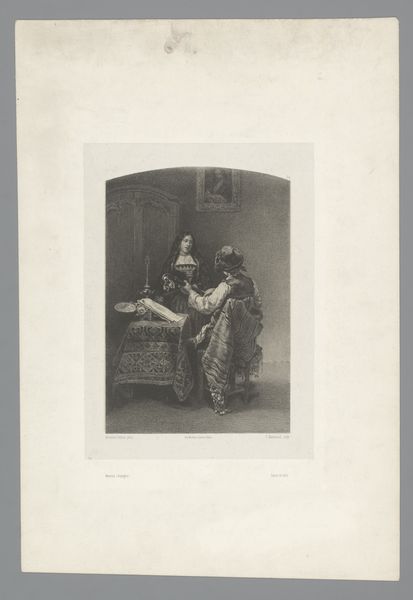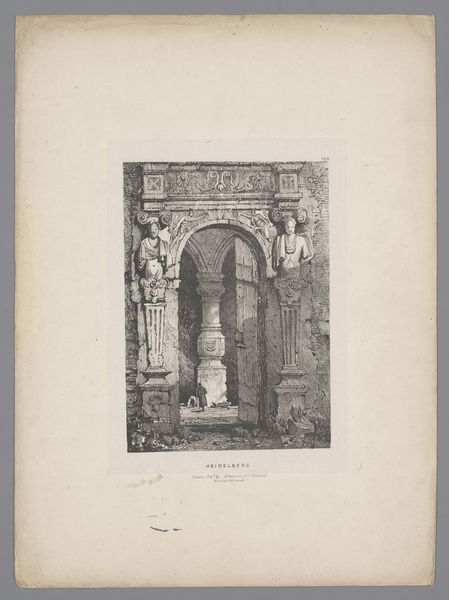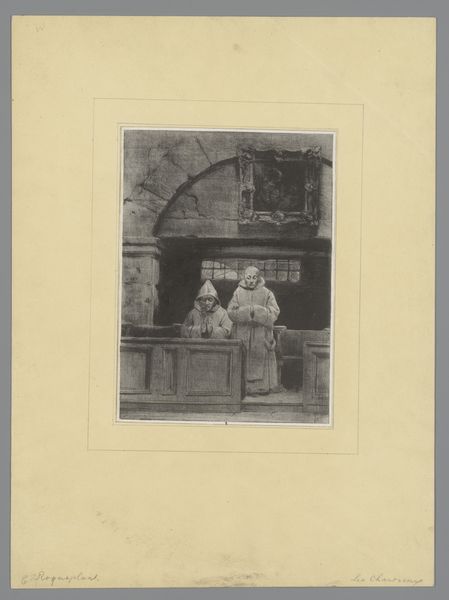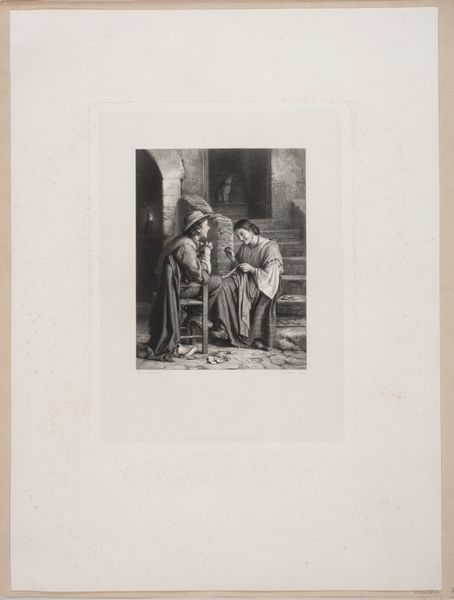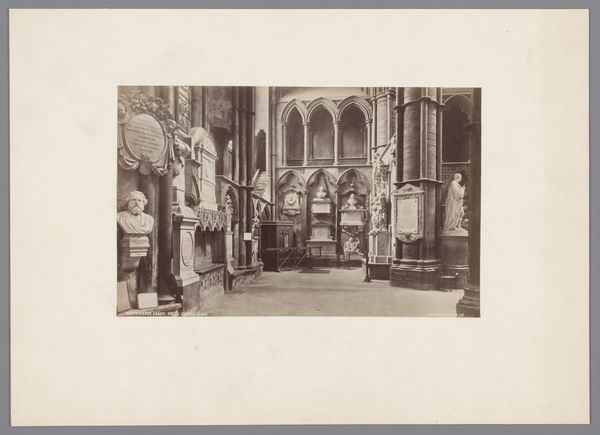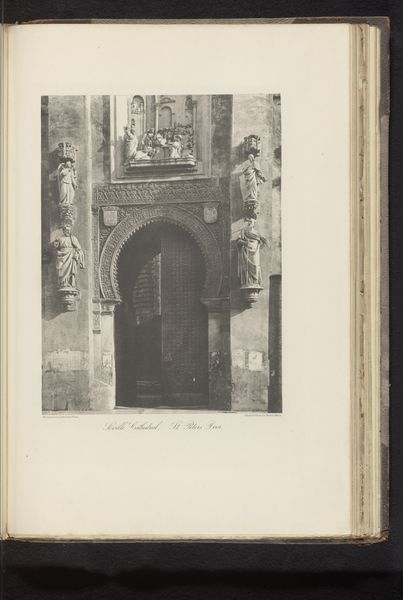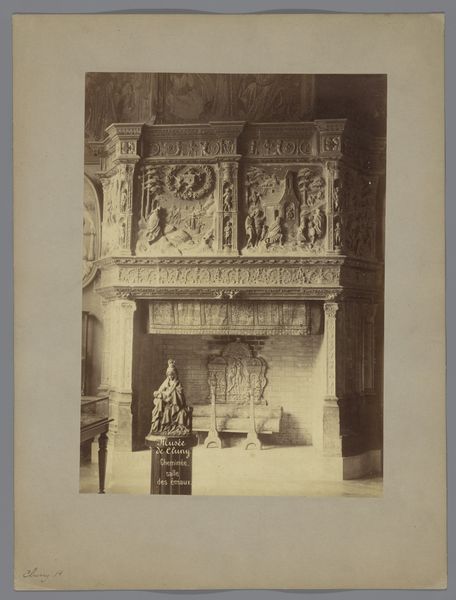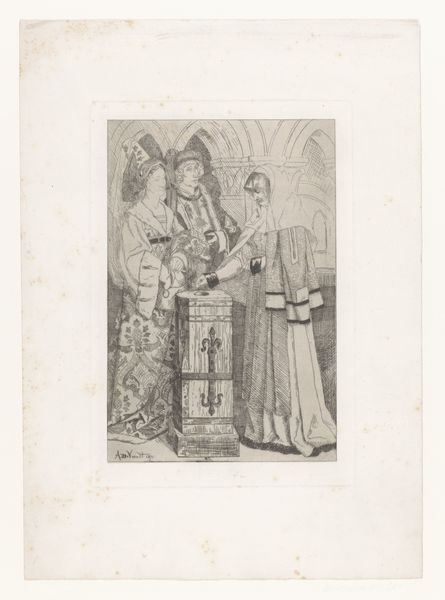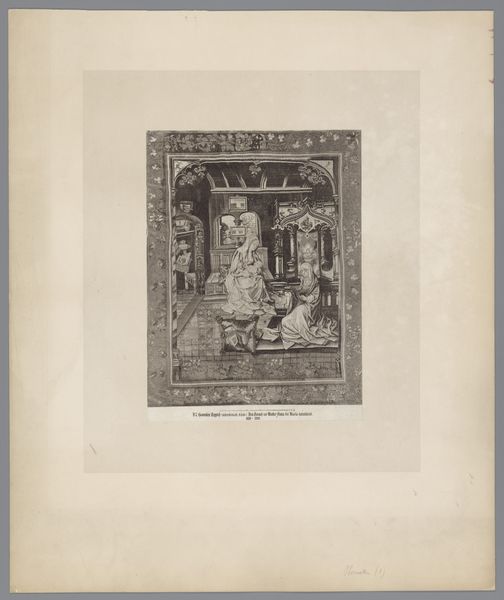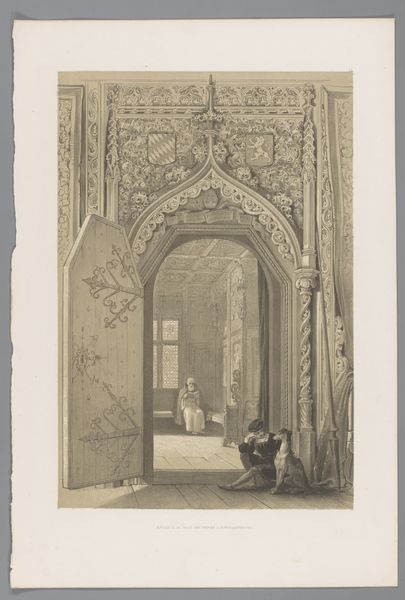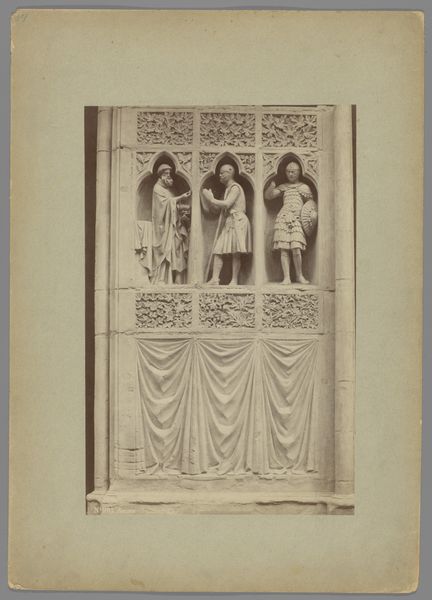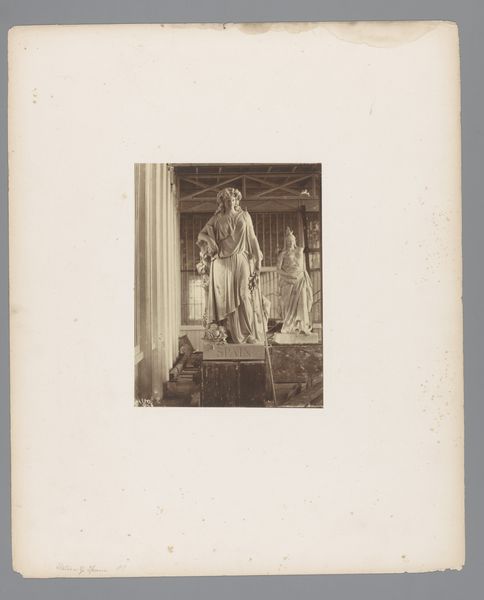
Sculptuur van Maria, Christus en anderen en een reliëf in de San Marco in Venetië before 1885
0:00
0:00
print, relief, paper, photography, sculpture
#
portrait
#
narrative-art
# print
#
relief
#
figuration
#
paper
#
photography
#
ancient-mediterranean
#
sculpture
#
realism
#
statue
Dimensions: height 390 mm, width 310 mm
Copyright: Rijks Museum: Open Domain
Editor: This photograph captures sculptures from San Marco in Venice, depicting Mary, Christ, and other figures, as well as a relief. It was taken by Carl Heinrich Jacobi sometime before 1885. The print itself has this great, aged quality. The figures are so formal. How should we interpret the photo of the sculptures and the relief together? Curator: Well, this photograph isn’t just about the sculptures themselves, is it? Jacobi is documenting a particular moment in the reception and presentation of these artworks. Consider, first, where this photograph might have circulated. Who was the intended audience, and what purpose did such an image serve? Editor: Possibly tourists? As a souvenir, almost? Curator: Precisely! Think about the rise of tourism in the 19th century and the development of photography. Images like these helped to disseminate and popularize particular cultural narratives tied to places like Venice. Note the careful arrangement of the sculptures and relief. What narratives about Venice, its history, its relationship to religious power, were being manufactured and sold? Editor: So the photograph itself becomes part of the art historical story? It makes you think about what was deemed important enough to capture, curate, and share. Curator: Exactly! The very act of selecting these particular sculptures and presenting them in this way reflects a certain power dynamic. How the photographer interpreted and presented these images becomes part of how viewers understood Venice. Even in the age of mechanical reproduction, choices are being made. Editor: I hadn't thought about photography in that light, about the politics of visual representation that go hand-in-hand with technological advances. Thanks! Curator: Of course. I am delighted that I have illuminated a new way to view historical archives through a cultural and political lens!
Comments
No comments
Be the first to comment and join the conversation on the ultimate creative platform.


